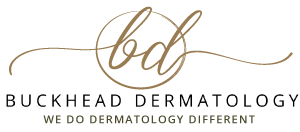Three Basic Skin Types to Narrow Down Skin Concerns

All skincare lines or products reference skin type in some fashion, but the surprising news is that most people do not know their skin type. Unfortunately, this often leads to errors in self-assessment. Let’s face it, it isn’t easy to know one’s skin type without consulting with a licensed dermatologist because skin type is more than just skin deep. Although there are expansive lists of skin types, the main three are normal, dry, and oily. Knowing a little about each may help shed some light on the mystery around skin types.
Normal Skin Most Common Under Age 30
Some consider normal skin types the healthiest because those with this skin type don’t have discolorations on their skin, such as dark spots and redness, and there are no signs of dryness. Normal skin has a strong barrier, produces enough sebum to balance the moisture, is resistant to inflammation, is typical for adults under 30 years of age and do not have aging risk factors.
People who have normal skin don’t likely suffer from oily skin or dry skin. Instead, the skin is balanced, and normal skin has small pores and smooth texture and rarely experiences breakouts, greasiness, or flakiness. Although normal skin is less prone to specific skincare concerns, it must be cared for with a regular skincare routine, including washing, moisturizing, and sunscreen.
Dry Skin Indicates Lack of Hydration
Skin lacking hydration will feel tight and may look dull and, in some cases, flaky. Because dry skin is dehydrated, it is more challenging to exfoliate properly, which increases inflammation. Dry skin is defective in the skin’s barrier and is often rough to the touch. Dry skin is more sensitive and has less natural protection. In some cases, dry skin may cause skin to appear dull or ashy in color.
What Causes Dry Skin?
Dry skin is caused by the skin’s permeability barrier not fully functioning, so the skin loses water in more significant amounts and more quickly. There are many factors that cause dry skin, including hormonal changes, aging, genetic factors, dry climate, hot water, harsh cleaners, and other irritants. Dry skin is triggered by age, which results in more noticeable lines and wrinkles. The ashy tones are more common in those people with darker skin tones. Licensed dermatologists specializing in darker skin tones will have excellent advice on how to keep dry skin moist, support your skin’s natural barrier, and keep the signs of aging at bay.
Dry Skin Upside
If you have dry skin, there are some benefits! Dry skin goes alongside minimal pore sizes, so breakouts are unlikely, and dry skin is less sensitive. Those with dry skin have the benefit of knowing if they invest in hydrating their skin, the visible signs can be minimized, and the skin does not look oily or shiny.
Oily Skin Appears Shiny
Oily skin appears shiny and oily. Many who have oily skin have relatives with the same skin type. However, oily skin can be triggered by hormonal changes (why teens often have oily skin and suffer from breakouts), humid climates, and the wrong skincare products. Those with oily skin typically use products to dry out the skin, but this can backfire if the skin becomes too dry, triggering the sebaceous glands to produce even more sebum! Individuals who struggle with oily skin should seek the professional guidance of a dermatologist – they have the education, training, and knowledge to get the skin to look more balanced and minimize breakouts.
What Causes Oily Skin?
The skin is overproducing sebum within the pores. When the sebaceous glands overproduce too much sebum, the skin gets oily and greasy. The buildup of dead skin cells and sebum leads to breakouts, which are often mistreated by simply trying to use products to dry out the skin. The T-zone is typically the most affected area, and signs of oily skin include enlarged pores and acne. Those with oily skin have difficulty finding make-up that will stay put and sunscreen that doesn’t exacerbate the condition.
Oily Skin Upside
There are benefits to oily skin, too! Oily skin is less prone to the signs of aging because it has a natural layer of sebum that provides moisture. The sebum oil protects the skin and shields it from many environmental factors. So, although in the moment, oily skin may seem negative, it does show signs of aging later than others and can be a beautiful glow on the skin once the sebum glands are regulated and maintained. Oily skin also minimizes the likelihood of having psoriasis and eczema.
If you are in Atlanta and want to know more about your skin type and how to treat any concerns, contact Buckhead Dermatology today for an appointment.
